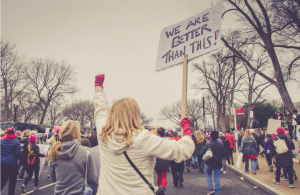
In one of our sessions, we had the opportunity of meeting Richard Matthews in the field of Peacebuilding and his specialty was connecting the dots between violence and health. He introduced us to a very unique way of looking at violence i.e. violence as a disease. We all talk of violence and how there are so many different contributing factors to a conflict and how intricately complex it is. But when you think of violence as a disease, it makes sense. For example:
Model: Susceptibility Infection recovery
If you treat violence as a disease, you are made aware of the fact that most of the people who behave violently or participate in violent acts have been victims of violence themselves or have been around violence a numerous amount of times. In this sense, they were susceptible to violence. After exposure to violence again and again, they start exhibiting that same behavior or other reactive forms of behavior (in reaction to the violence they have been exposed to) that qualify as violent. In other words, you can say that they are infected. Once infected, they perpetuate this violent cycle that then makes others susceptible to it and eventually infected and so on and so forth. And then, the system is victim to a cascading effect.
Kazu Haga, “Hurt people hurt people.”
If one were to recover from a disease, you have prescriptions and medicines given by doctors or specialists in the field of medicine. In a similar sense, to recover from violence you have various prescriptions and medicines. For example, if violent behavior is being expended by a person who has had a violent traumatizing past, the diagnosis could be trauma and one of the medicines could be trauma-healing along with other forms of behavior change tools.
Where then does peacebuilding come in in the midst of all of this? It is at these junctures or middle grounds, where a person moves from one stage to another, that peacebuilders can instigate change through their area of study or expertise. However, how do we go about garnering the support for these movements and motivating investments to access the resources required for these programs? How do we attract public/ societal investment?
In my opinion, the key is in susceptibility. People, society, in today’s reality address the disease of violence with a shunning attitude. They want to be safe and keep their loved ones safe and so the action of removing the violence from the environment is equated with removing the people with the disease and putting them in “quarantine” (Jail/ prison). However, the people already infected with this disease are in the millions, locking them up (as discussed in my blog earlier) will only intensify the symptoms of this disease, making society more prone to susceptibility of violence. The only solution here as we say in peacebuilding is, getting down to the roots of it, and eradicating the disease instead of the people with the disease. Once people understand that, they will start to be more invested in this approach. Touching in a way on the concept of pragmatic pluralism, we need to understand that we all, i.e. all of us members in society have our role to play and bring different contributions to the table. We are all structurally interdependent on each other maintaining a good balance in society, facilitating sound functioning of said society. However, the second pockets of society and individuals start resorting to violence and disrupting the balance, the whole of society is affected by it. Only once we as a society can acknowledge this idea and accept it, can we move forward in effectively combating violence.
Kazu Haga, “ The challenge is to build compassion for the not beloved in community. One’s liberation is bound to another.”

